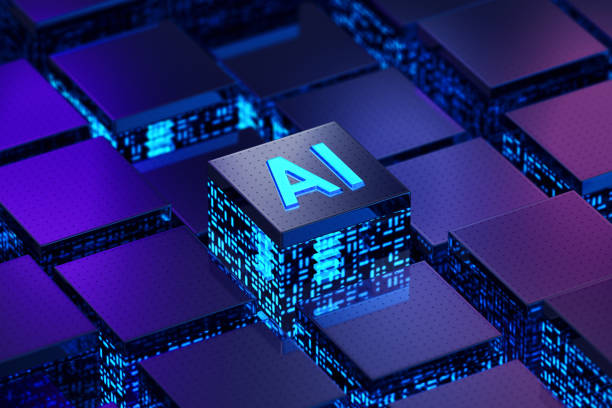The 21st century has seen a tremendous amount of innovation and advancements in technology. From new modes of transportation to advanced medical treatments,here are 12 of the top inventions of the 21st century
n1. Smartphones - The introduction of the iPhone in 2007 revolutionized the way we communicate and access information
Smartphones have undoubtedly been one of the most influential and transformative technological inventions of the 21st century. The introduction of the iPhone by Apple in 2007 was a pivotal moment, as it completely changed the way people communicated and accessed information.
Before smartphones, people primarily used desktop computers and laptops to access the internet and communicate via email or instant messaging. But the iPhone introduced the concept of a handheld device that could do all of that and more, with a touch-based interface and a range of apps that could be downloaded and used for a wide variety of tasks.
The success of the iPhone inspired other tech companies to enter the smartphone market, and today, smartphones are ubiquitous. They are used for everything from social media and entertainment to mobile banking and online shopping. With a smartphone in hand, people can access the internet, communicate with others instantly, and stay connected to the world around them no matter where they are.
Smartphones have also had a profound impact on industries such as journalism, advertising, and e-commerce. With the rise of mobile apps and social media platforms, businesses can now reach customers in new and innovative ways, and consumers can access information and products with just a few taps on their screens.
Overall, the smartphone has revolutionized the way we live and work in the 21st century, and its impact will continue to be felt for years to come
n2. Electric Cars - Tesla's Model S, introduced in 2012, brought electric cars into the mainstream with its sleek design and long-range capabilities
Electric cars have become increasingly popular in recent years, and Tesla's Model S, which was introduced in 2012, played a significant role in bringing electric cars into the mainstream. The Model S was not the first electric car on the market, but its sleek design and long-range capabilities helped to change people's perceptions about what electric cars could be.
Before the Model S, electric cars were often seen as quirky and impractical, with limited range and unattractive designs. But Tesla's focus on design, performance, and technology helped to change all that. The Model S offered a range of up to 300 miles on a single charge, making it practical for long-distance travel, and its sleek exterior and luxurious interior helped to dispel the notion that electric cars were inferior to gasoline-powered vehicles.
The success of the Model S inspired other automakers to invest in electric cars, and today, there are dozens of electric car models available from various manufacturers. Electric cars are more environmentally friendly than gasoline-powered cars, producing no tailpipe emissions and contributing to lower levels of air pollution.
The growth of electric cars is also driving innovation in battery technology and charging infrastructure. As more electric cars hit the road, there is increasing demand for faster and more efficient charging stations, as well as longer-lasting batteries that can support longer ranges and more demanding driving conditions.
Overall, the rise of electric cars has the potential to transform the automotive industry and help reduce the world's reliance on fossil fuels. While there are still challenges to be addressed, such as the high cost of electric cars and the need for more charging infrastructure, the future of electric cars looks bright, thanks in part to the groundbreaking work of companies like Tesla.
n3. 3D Printing - 3D printing technology has revolutionized manufacturing by allowing objects to be created layer by layer, based on digital designs.
- Customization - 3D printing allows for the creation of custom parts and products that are tailored to individual needs and specifications.
- Faster Prototyping - 3D printing enables rapid prototyping, allowing designers and engineers to quickly test and refine their designs before going into full production.
- Reduced Waste - With 3D printing, material is only used where it is needed, reducing waste and lowering the environmental impact of manufacturing.
- Reduced Cost - 3D printing can be a more cost-effective way to produce small batches of parts, as it eliminates the need for expensive tooling and setup costs.
- Complex Geometry - 3D printing can produce complex shapes and geometries that would be difficult or impossible to create using traditional manufacturing methods.
- On-Demand Manufacturing - 3D printing enables on-demand manufacturing, allowing for parts and products to be produced as needed, rather than being mass-produced and stored in inventory.
Overall, 3D printing has the potential to revolutionize manufacturing and enable new possibilities in a variety of fields, including aerospace, healthcare, architecture, and more.
n4. Artificial Intelligence - enables machines to perform tasks that traditionally require human intelligence.
Artificial Intelligence (AI) involves creating machines and computer programs that can perform tasks that typically require human intelligence, such as recognizing speech, making decisions, understanding natural language, recognizing images, and playing games. AI technology is powered by complex algorithms and data processing capabilities that enable machines to learn from experience and improve their performance over time without being explicitly programmed. This has led to a wide range of applications in fields such as healthcare, finance, education, transportation, and manufacturing. AI has the potential to transform the way we live and work, and its development and integration into our daily lives are expected to accelerate in the coming years.
n5. Renewable Energy Technologies - provides clean and sustainable sources of energy
Renewable energy technologies are a group of technologies that harness naturally replenishing sources of energy to generate electricity, heat, and cool buildings, and power transportation. The primary sources of renewable energy include solar, wind, hydro, geothermal, and biomass.
- Solar energy: Solar energy technologies use photovoltaic (PV) cells to convert sunlight into electricity. They are commonly used to power homes, businesses, and other buildings
- Wind energy: Wind turbines are used to generate electricity from the kinetic energy of the wind. They are commonly used in wind farms to power large areas
- Hydro energy: Hydroelectric power plants generate electricity from the potential energy of water stored in reservoirs, which is converted into kinetic energy to drive turbines
- Geothermal energy: Geothermal power plants generate electricity by tapping into the Earth's natural heat energy, using hot water and steam to drive turbines
- Biomass energy: Biomass energy is derived from organic matter such as wood, crops, and waste. It can be converted into electricity or used to produce biofuels
Renewable energy technologies offer a clean and sustainable alternative to traditional energy sources such as coal, oil, and natural gas, which emit greenhouse gases and contribute to climate change. They are becoming increasingly cost-competitive and widely adopted around the world, with many countries setting ambitious goals to transition to renewable energy to meet their energy needs while reducing their carbon footprint.
n6. Social Media - transformed how we connect and interact with each other
Social media has completely transformed how we connect and interact with each other. Before the advent of social media, our communication was limited to in-person conversations, phone calls, and emails. However, with the emergence of social media platforms, we now have access to a variety of communication tools that allow us to interact with others in real-time, regardless of our location.
One of the most significant impacts of social media has been its ability to bring people together from all over the world. It has created a sense of community that transcends geographical boundaries, allowing people to connect and communicate with others who share similar interests and beliefs. Social media platforms like Facebook, Twitter, and Instagram have become a hub for sharing information, ideas, and experiences, and have enabled people to build relationships and networks that would have been impossible just a few decades ago.
Social media has also given individuals and groups a platform to amplify their voices and share their perspectives with the world. It has become a powerful tool for social and political activism, allowing individuals to mobilize around a cause and reach a wider audience than ever before. Social media has been instrumental in organizing protests and social movements, and has played a significant role in shaping public opinion and driving social change.
However, there are also downsides to social media. The constant stream of information and communication can be overwhelming and lead to feelings of anxiety and stress. It can also be a breeding ground for misinformation and fake news, and can be used to spread hate speech and harmful content. In addition, social media has been criticized for its impact on mental health, with studies suggesting that excessive social media use can contribute to feelings of depression and isolation.
Overall, while social media has transformed how we connect and interact with each other, it is important to be aware of its potential drawbacks and use it responsibly. By doing so, we can continue to enjoy the benefits of social media while minimizing its negative impacts






No comments:
Post a Comment